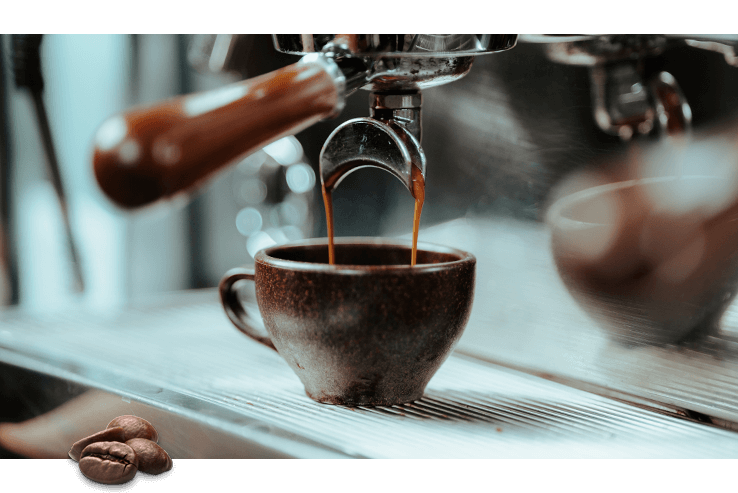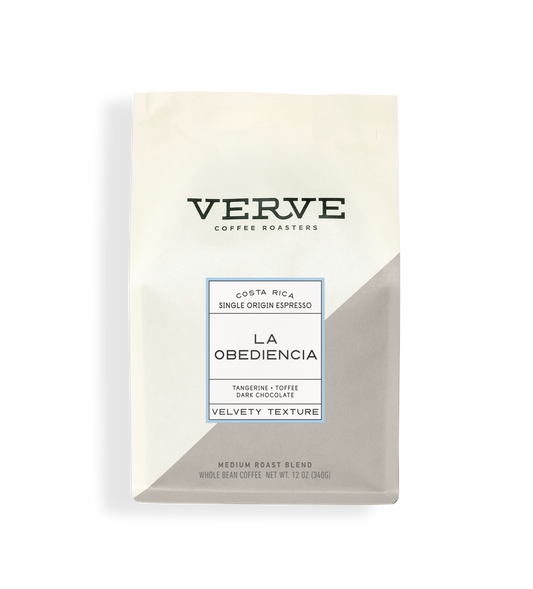SOE Single Origin Espresso – Recommended for Manual Brewing Methods
Wiki Article
Comprehending Coffee Beans: the Trip From Coffee to Blended Coffee Beans

The Origins of Coffee: An International Viewpoint
While you might believe of coffee as a modern staple, its beginnings map back centuries, linking with cultures throughout the globe. The story starts in Ethiopia, where tale says a goat herder called Kaldi discovered the stimulating effects of coffee beans after noticing his goats frolicking vigorously after consuming them.As trade paths increased, coffee made its means to Europe in the 17th century, rapidly gaining popularity. Each society included its special twist to coffee prep work, improving its background.
Farming and Harvesting of Coffee Beans
As coffee's journey developed, the focus shifted to the farming and harvesting of particular bean ranges, specifically those used for coffee. You'll locate that coffee beans frequently originate from Arabica or Robusta plants, each offering unique tastes. The ideal expanding problems include high altitudes and rich, well-drained soil, which boost the beans' quality.During the harvest, selecting methods differ. Timing is crucial; you want to harvest when the cherries get to peak ripeness for optimum flavor.
Once collected, the beans are planned for processing, which is necessary in identifying their final preference. Comprehending the cultivation and harvesting procedures provides you insight right into what goes right into your favored espresso, improving your recognition for every cup.
Handling Techniques: From Cherry to Bean
Now that you've learnt more about harvesting coffee beans, allow's check out how those cherries transform right into the coffee beans you like. You'll see exactly how different harvesting techniques effect flavor, adhered to by the essential steps of fermentation and drying out. We'll damage down the milling and grading process that identifies your coffee's top quality.Harvesting Strategies Explained
When it comes to coffee, comprehending harvesting techniques is vital, because they directly affect the flavor and high quality of the beans you enjoy. Careful selecting includes hand-picking just ripe cherries, ensuring you get the best high quality beans. Ultimately, the option of collecting strategy can substantially influence your coffee experience, so it's worth knowing how those beans made it to your mug.Fermentation and Drying
After collecting, the next action in handling coffee beans play a significant duty in forming their taste. You'll discover that fermentation is important, as it helps damage down the mucilage bordering the beans, improving their taste account. Relying on the technique, this process can last from a few hours to several days, with varying outcomes based on temperature level and humidity.Sun-drying enables the beans to take in tastes from the setting, while mechanical drying out warranties regular wetness levels regardless of weather condition. Correct drying out is crucial to prevent mold and mildew and maintain the beans' quality, inevitably affecting your mug of coffee.
Milling and Grading Process
As fermentation and drying established the stage for taste development, the milling and grading process warranties that only the finest coffee beans make it to your cup. This stage includes eliminating the external layers of the coffee cherry, consisting of the parchment and husk. Top quality beans get a greater quality, resulting in a richer coffee experience.Toasting Techniques: Unlocking Flavor Possible
When you roast coffee beans, the technique you pick can substantially impact the taste account. Understanding the connection in between time, temperature level, and roasting techniques is key to revealing the potential of your brew. Allow's discover just how these components integrated to develop the perfect mug.Toasting Techniques Explained
While you could think that all coffee roasting approaches yield the very same results, the fact is that each method discloses special flavor capacities in the beans. You can choose in between methods like drum roasting, air roasting, or also conventional frying pan roasting. Drum roasting utilizes a rotating drum to uniformly disperse heat, enhancing caramelization and generating a well balanced taste. Air roasting, on the various other hand, circulates hot air around the beans, promoting a lighter roast with obvious level of acidity. Pan roasting permits for hands-on control however requires consistent interest to avoid burning. Each approach has its nuances, so try out different strategies can assist you discover the best roast that aligns with your preference preferences. Delight in the journey of finding your optimal cup!
Effect On Flavor Account
Various discover this info here toasting techniques not just get redirected here influence the process however likewise substantially affect the flavor profile of the coffee beans. Dark roasts, on the other hand, bring out strong, smoky tastes, sometimes masking the bean's special features. Understanding these subtleties aids you appreciate the creativity behind your mug of coffee, boosting your total experience with every sip.Time and Temperature Aspects
To release the complete taste capacity of coffee beans, both time and temperature level throughout the toasting procedure play considerable functions. When roasting, you'll find that greater temperature levels can promptly establish flavors, but if you hurry it, you could wind up with scorched notes. Alternatively, reduced temperatures permit a much more progressive flavor advancement, showcasing the beans' special characteristics.
Timing is equally as important; expanding the roast as well long can lead to a loss of level of acidity and brightness, while also brief a roast might leave the beans underdeveloped. Locating that wonderful spot requires technique and trial and error. By readjusting these elements, you can reveal the rich, complicated tastes hidden within each bean, creating a genuinely amazing coffee experience.
The Art of Mixing: Crafting One-of-a-kind Coffee Accounts

Beginning by picking a base coffee that offers a solid foundation. Select corresponding beans to improve details flavor notes. A brilliant Ethiopian bean can bring fruitiness, while an abundant Brazilian coffee adds body. Testing is vital-- don't hesitate to change ratios until you locate your perfect account.
As you blend, bear in mind that each combination tells a story. You're not just making coffee; you're producing an experience. So, take your time, taste often, and appreciate the trip of finding your trademark blend.
Developing Approaches: Just How Prep Work Impacts Flavor
Mixing coffee opens up a domain of taste possibilities, but how you brew that mix can significantly influence your final mug. On the various other hand, a pour-over highlights the coffee's clearness and brightness, perfect for showcasing fragile notes.Espresso, with its high pressure, produces a concentrated shot that emphasizes sweet taste and crema. If you favor a lighter mixture, take into consideration a cool mixture technique; it generates a smooth, less acidic preference.
Changing variables like water temperature level, grind size, and make time can change your coffee's profile. Welcome the art of brewing to find the tastes hidden in your coffee blends.
The Future of Coffee: Sustainability and Advancement
As the coffee industry advances, sustainability and development are coming to be important for addressing environmental obstacles and meeting consumer needs. You'll discover that even more coffee companies are embracing environmentally friendly techniques, from sourcing beans fairly to executing lasting farming methods. These changes not just help the planet however additionally boost the quality of the coffee you delight in.You may see technologies like biodegradable packaging and water-saving brewing techniques that lower waste. Advanced technology, such as blockchain, is also ending up being preferred, ensuring transparency in the supply chain, which enables you to trace your coffee back to its beginnings.
On top of that, purchasing neighborhood areas and sustaining farmers via reasonable profession initiatives fosters a much more lasting coffee ecosystem. As you sip your next cup, bear in mind that your choices can contribute to a brighter future for coffee. By going with lasting brand names, you're not simply taking pleasure in a beverage; you're making a positive effect on the globe.
Frequently Asked Questions
What Is the Difference Between Arabica and Robusta Beans?
Arabica beans are smoother, sweeter, and have a greater level of acidity, while robusta beans are stronger, extra bitter, and have even more high levels of caffeine. You'll see these distinctions in flavor and aroma when brewing your coffee.Just How Does Elevation Affect Coffee Bean Flavor?
Altitude influences coffee bean flavor significantly. Higher altitudes produce beans with brighter level of acidity and complex tastes, while lower elevations typically yield beans that are much heavier and less nuanced. You'll observe these differences in your mug!What Are the Health Conveniences of Drinking Coffee?
Consuming alcohol coffee can improve your energy, enhance mental emphasis, and even improve physical performance. It's abundant in antioxidants, might reduce the risk of specific diseases, and can advertise a healthier metabolism when eaten in moderation.Can Coffee Beans Be Reused for Brewing?
Yes, you can reuse coffee beans for developing, however the flavor could be weak. If you appreciate experimenting, try recycling them in various methods, like cold brews or adding to healthy smoothies for an added kick.Exactly how Should I Store Coffee Beans for Quality?
To keep your coffee beans fresh, keep them in a closed container in an amazing, dark location. Prevent exposing them to light, heat, or wetness, as these variables can swiftly deteriorate their taste and aroma.Recognizing Coffee Beans: the Trip From Espresso to Blended Coffee Beans.
Currently that you've found out regarding harvesting coffee beans, let's discover exactly how those cherries transform right into the coffee beans you enjoy.When you roast coffee beans, the approach you choose can significantly influence the taste profile - Single Origin Espresso.While you could think that all coffee roasting methods produce the exact same outcomes, the fact is that each technique discloses distinct taste possibilities in the beans.Different toasting methods not just affect the procedure however likewise significantly affect the taste account of the coffee beans
Report this wiki page